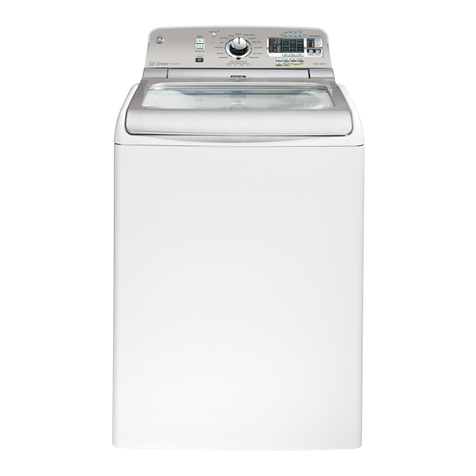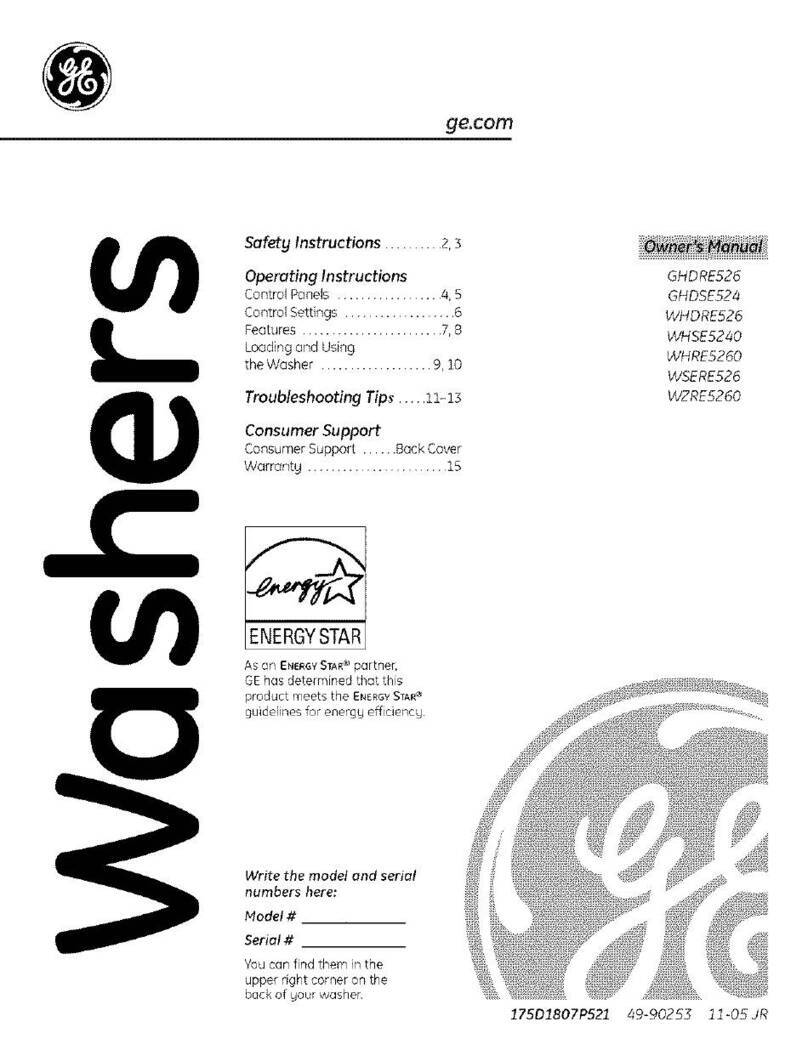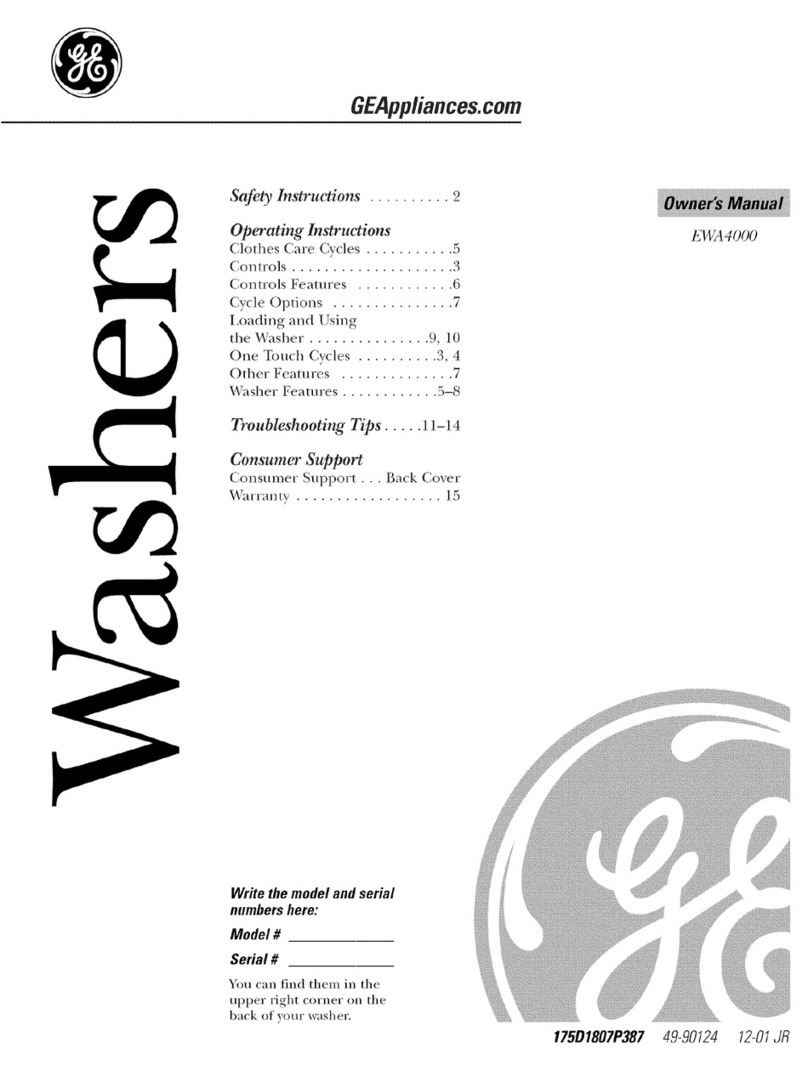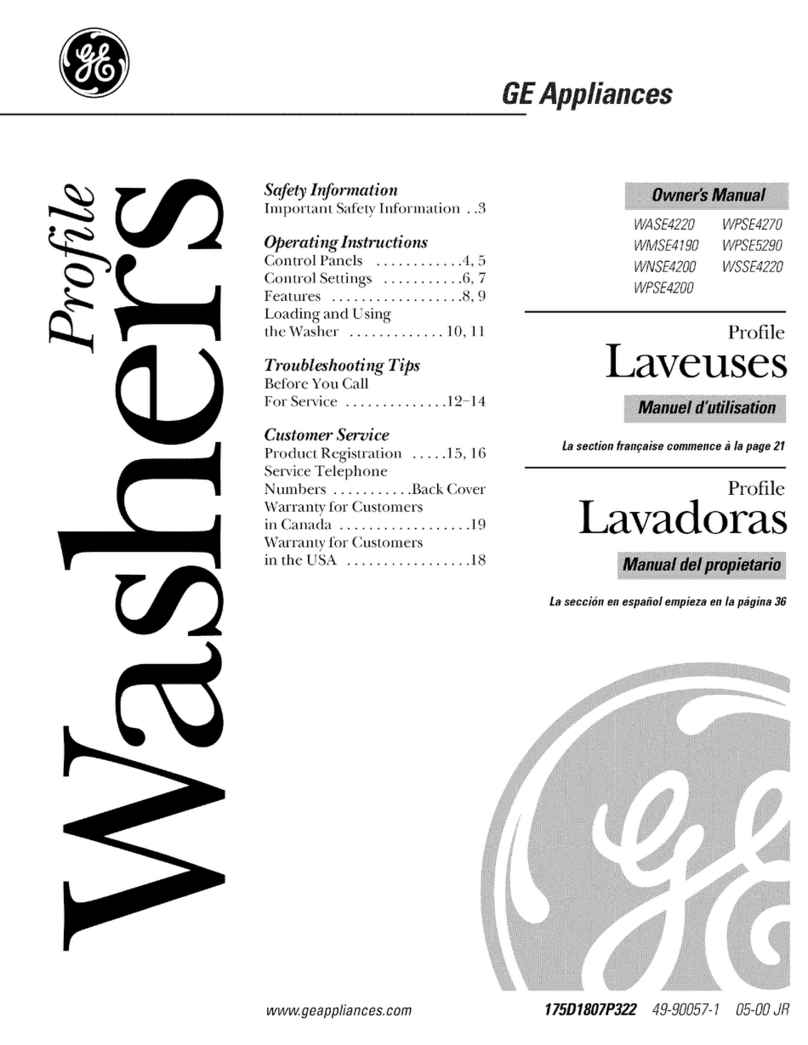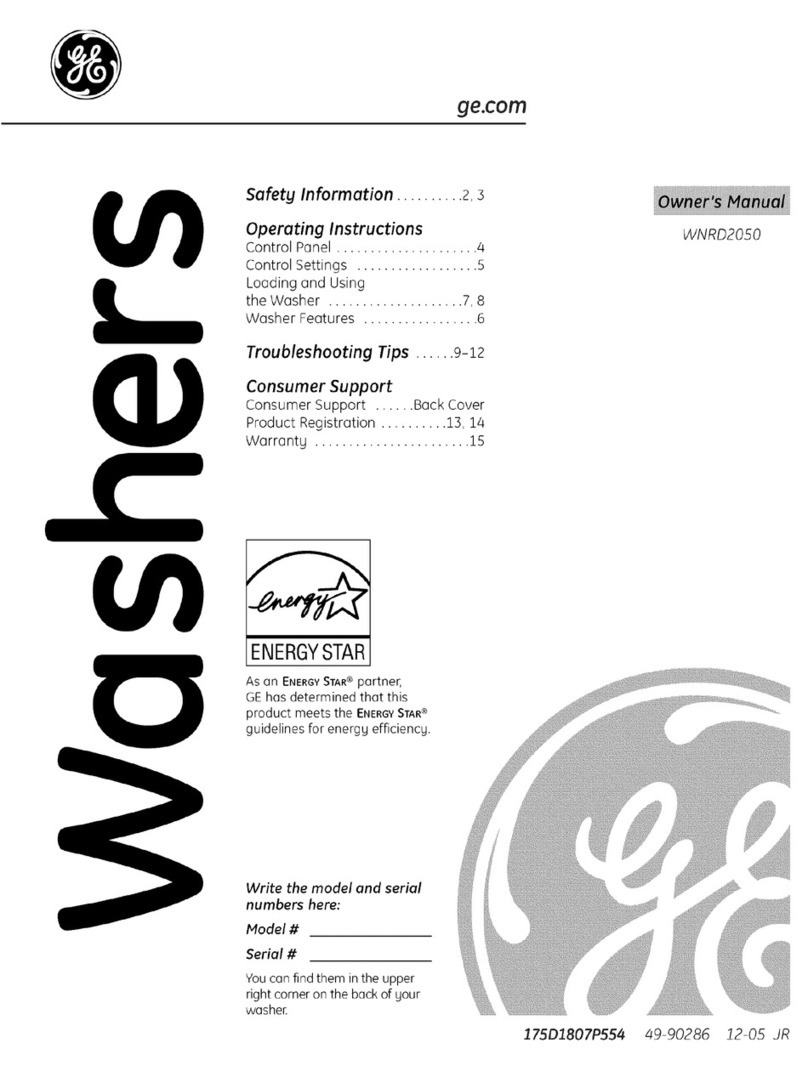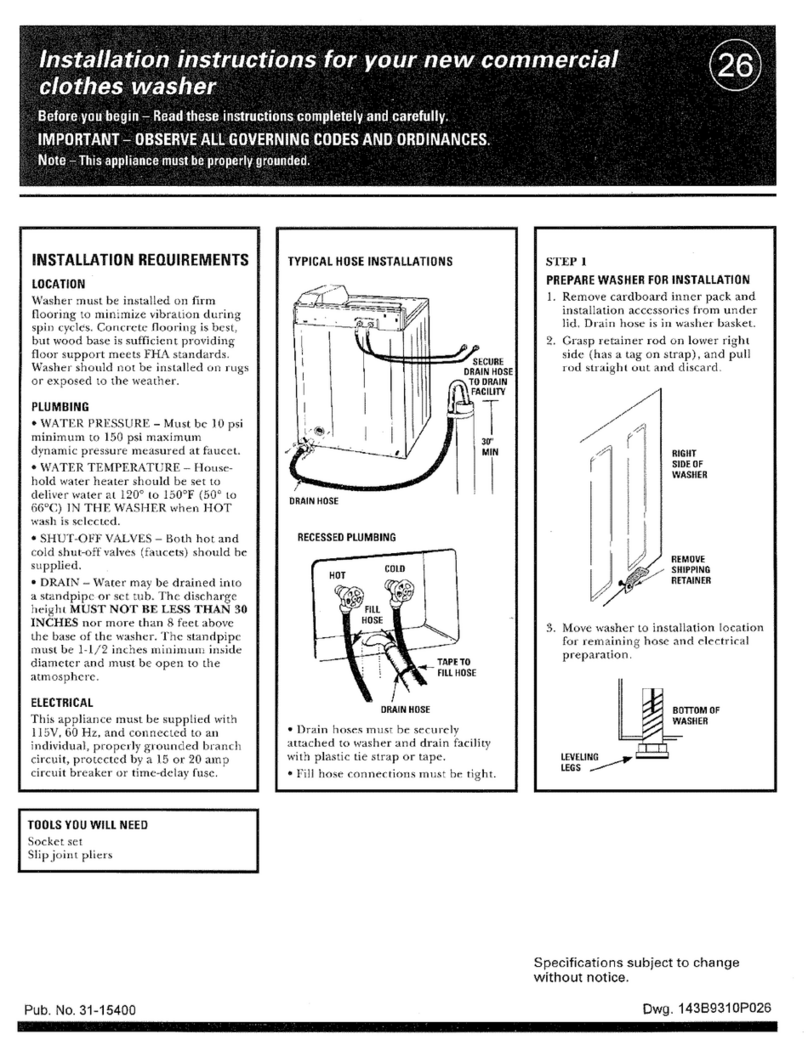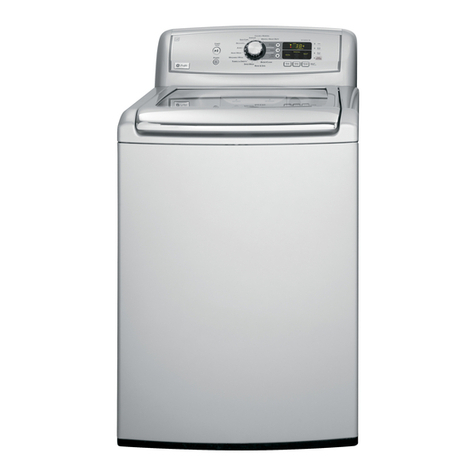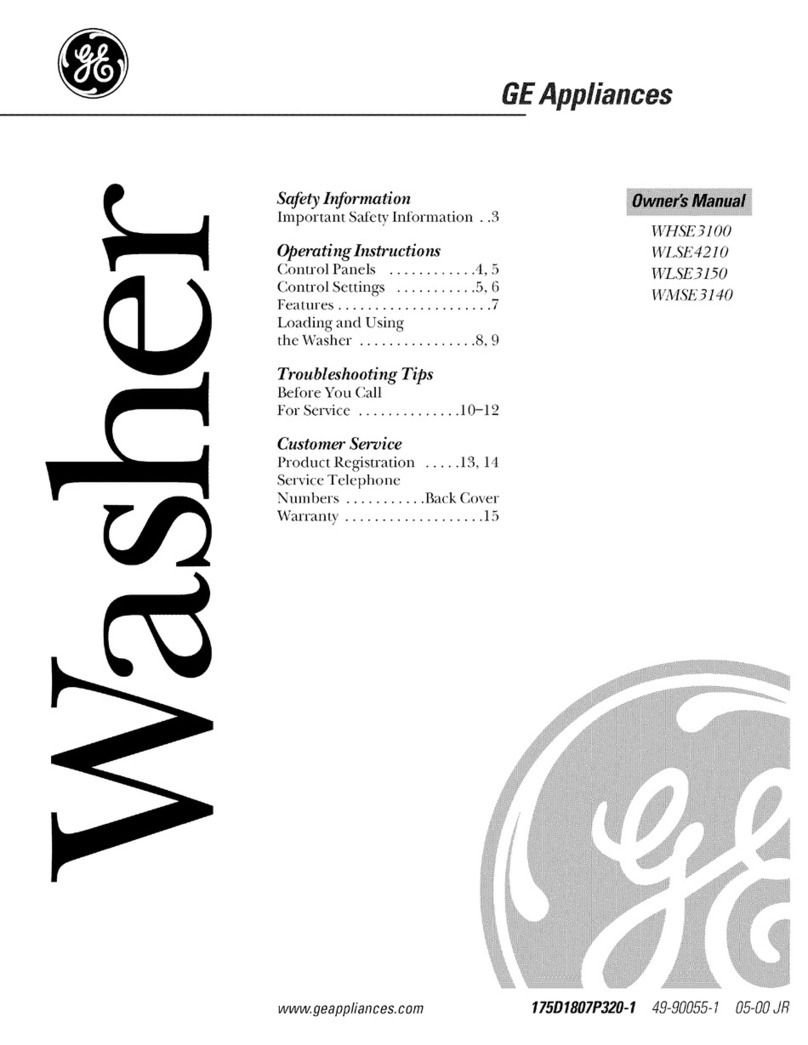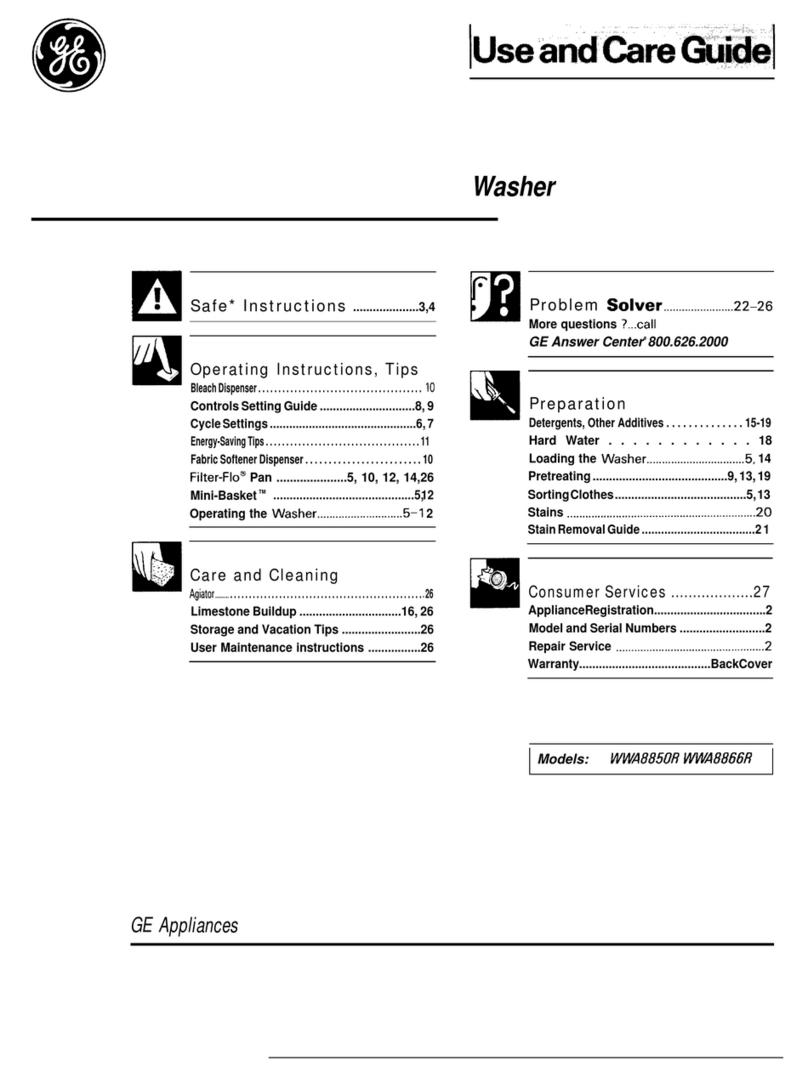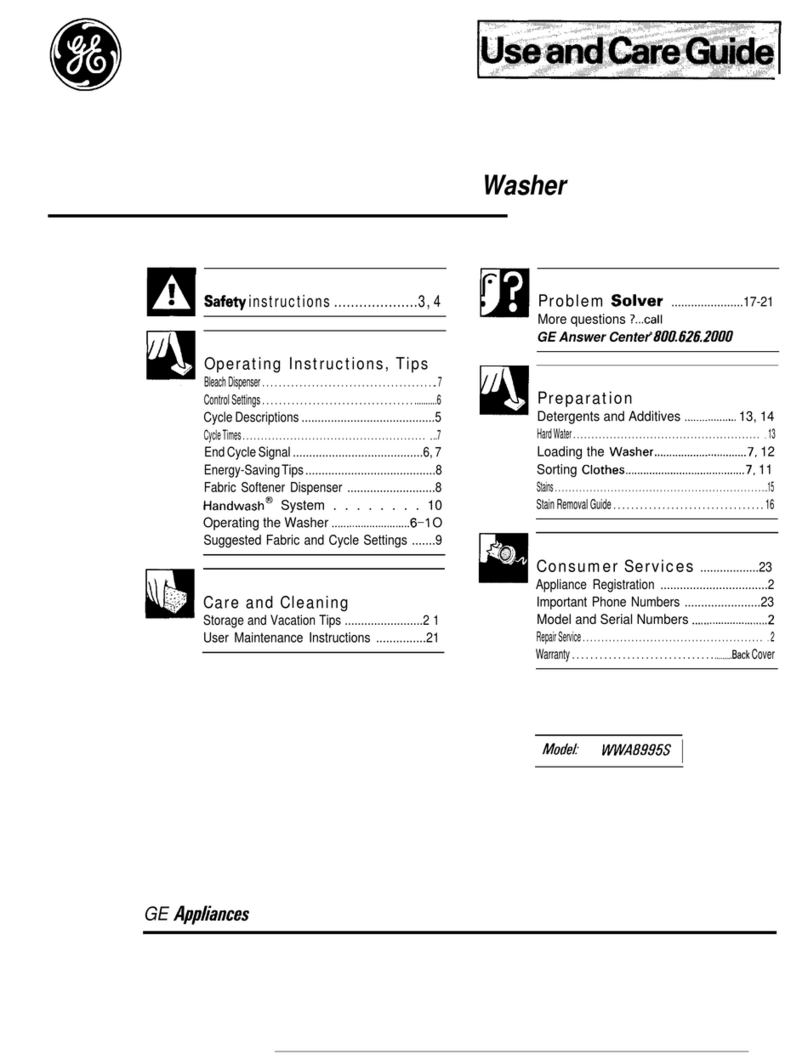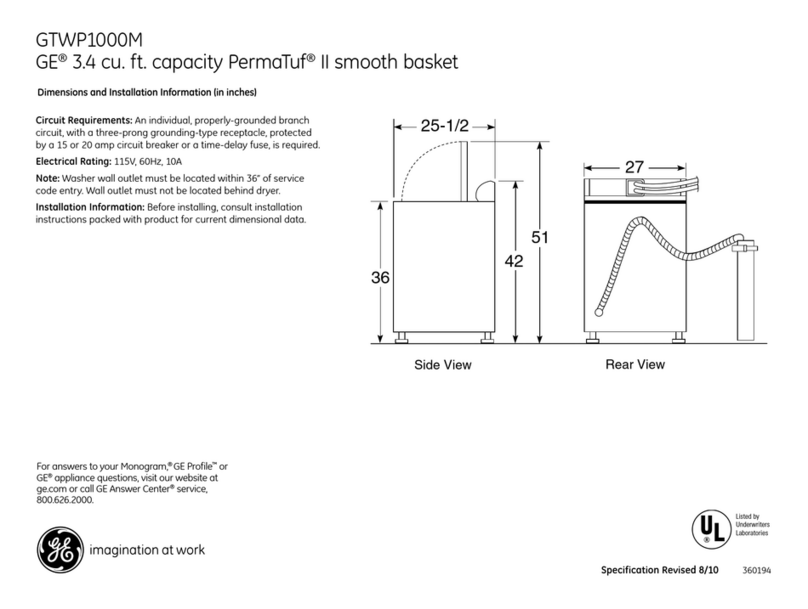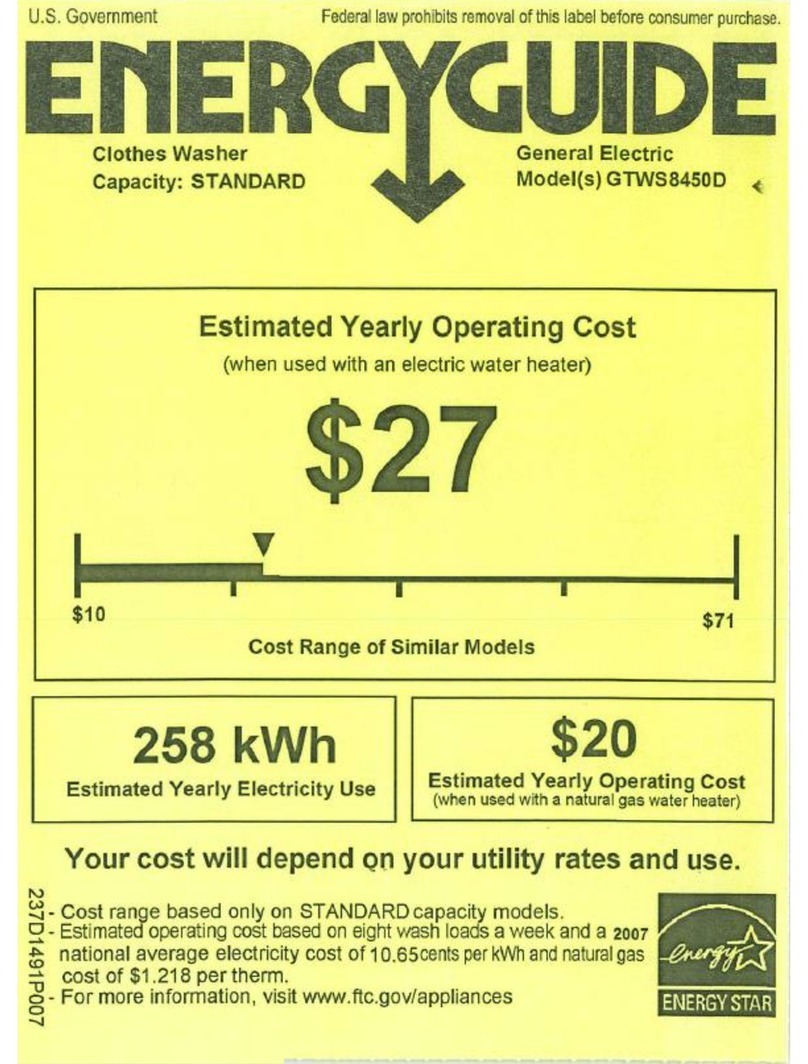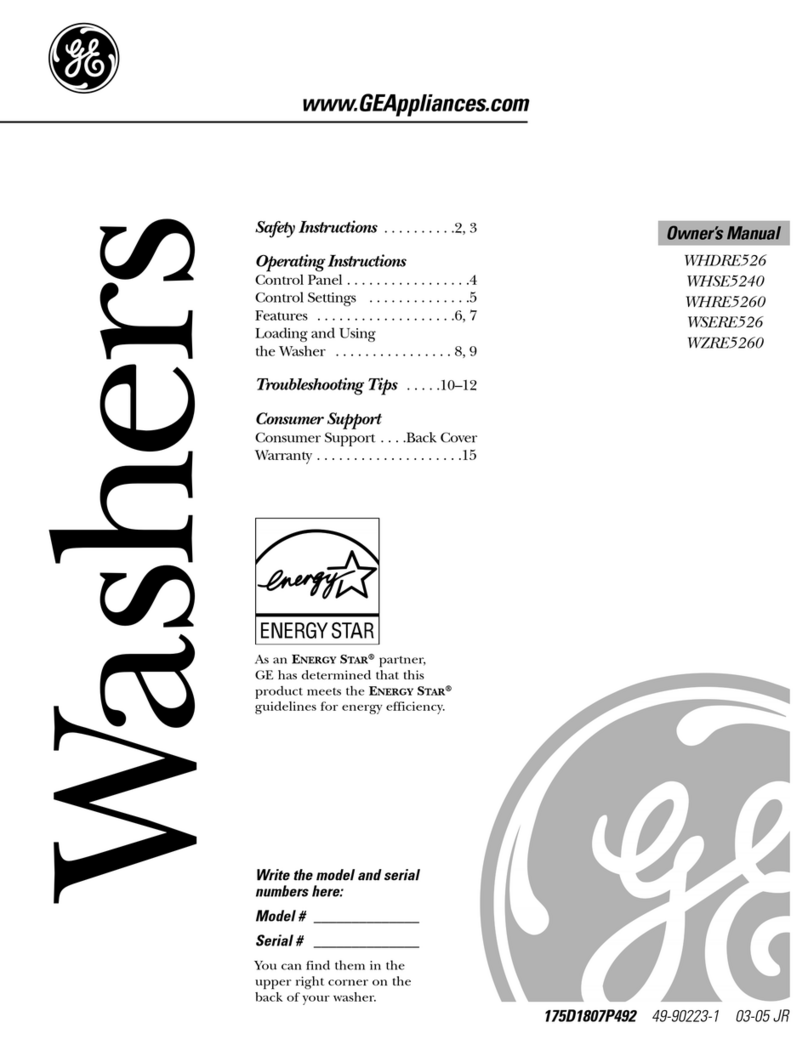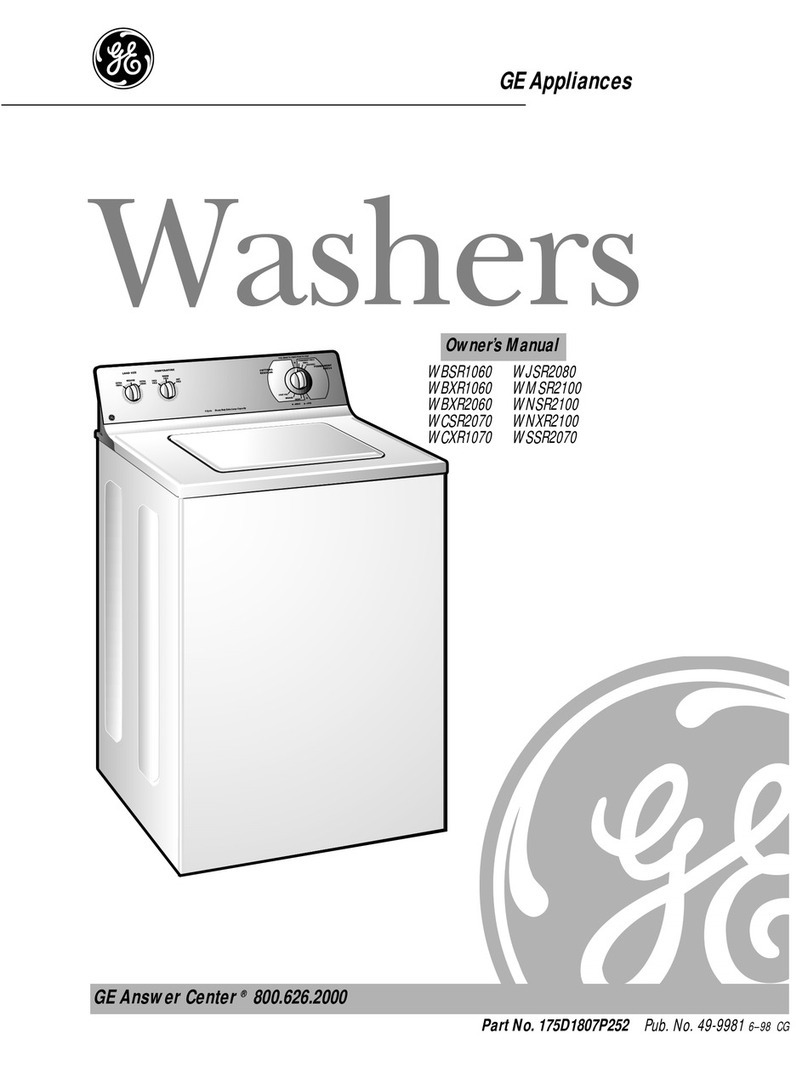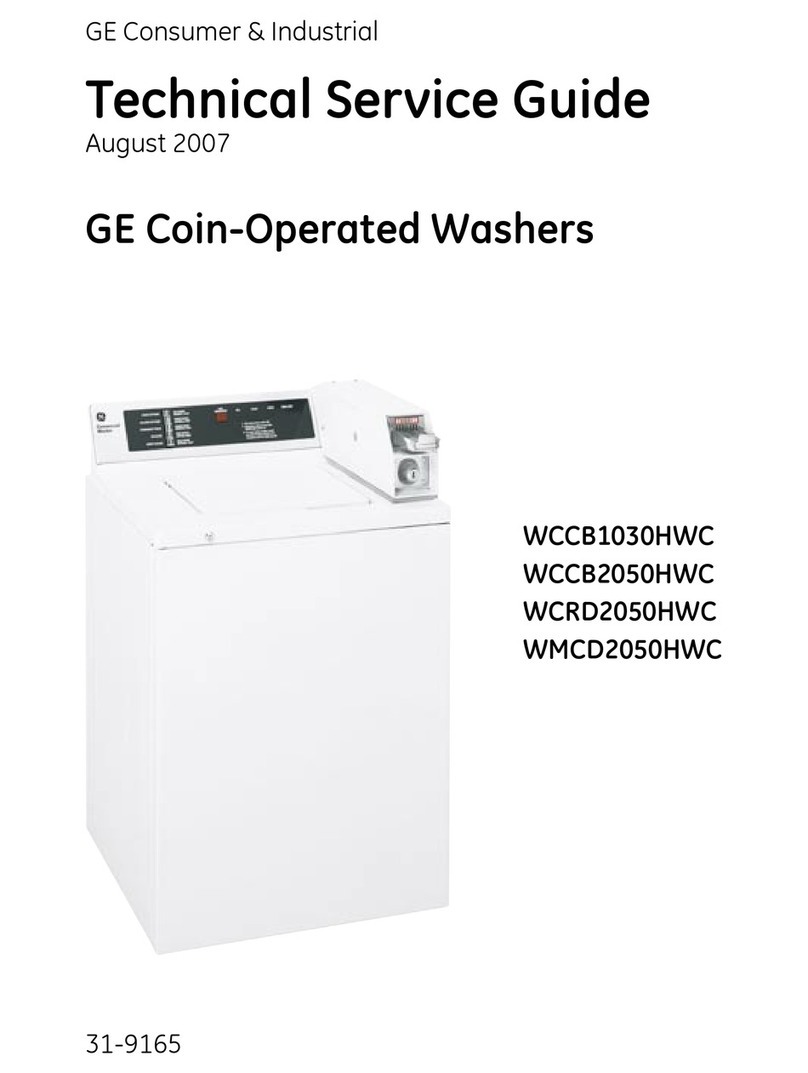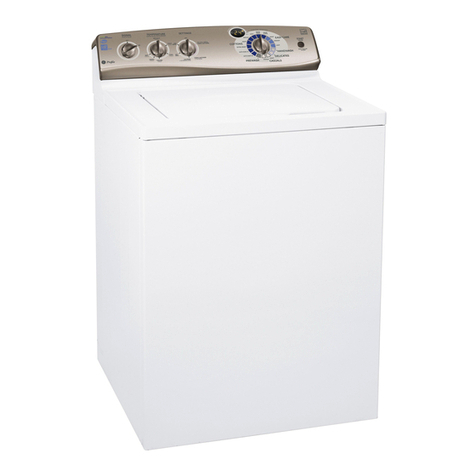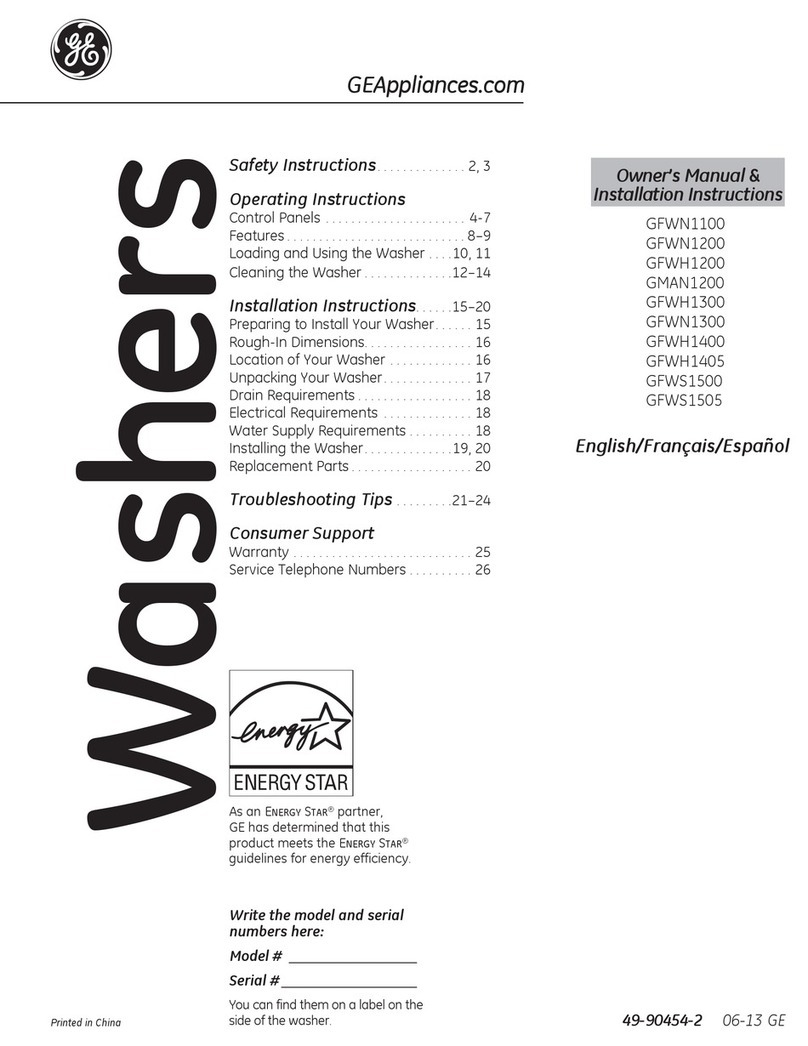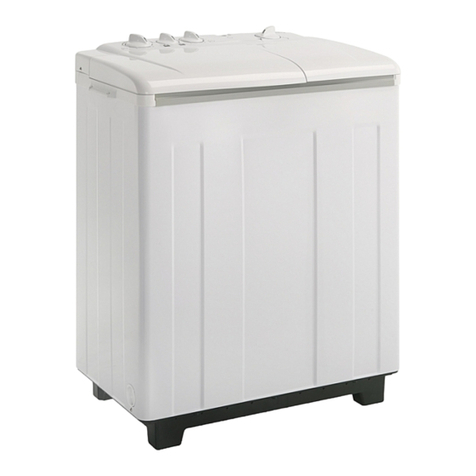IMPORTANT SAFETY I?WTRUCTK)NS
‘Read ail hIstruc~ions before using this appliance.
$-
W~ING–To reduce the risk of
fire, electricshock, or injury to
personswhenusingyourappliance,
followbasicprecautions,including
the foHowing:
.Usethis appliance onlyfor its
intended purpose asdescribed in
this Use and Care Book.
●This washer must be properly
installedand locatedinaccordance
withthe Installation Instructions
beforeitisused.If you did not
receive anInstallation Instructions
sheet with your washer, youcan
obtain onebycontacting the service
location nearest you.
—properlyground to conform
withallgoverningcodesand
ordinances. Followdetails in
Installation Instructions.
e–Install or store where it willnot
=:~ beexposedtotemperatures below
freezingor exposedtothe weather.
–Comect to aproperly rated,
protected and sized power supply
circuit to avoidelectrical overload.
–Connect to adequate plumbing
anddrain facilities as described in
the Installation Instructions.
GTurn off~ter fauee~ when
the washerisnotinusetorelieve
pressure on hoses andvalves, andto
minimizeleakageifahoseorvalve
shouldbreakorrupture.
Tominimize the possibility
of injury:
sDonot mix chlorine bleach with
ammonia or acids such asvinegar
and/or rust remover. Mixing can
produce atoxicgas which may
cause death.
●Do not wash or dry a~ic~es
that havebeen cleaned in, washed
in, soakedin, or spotted with
combustibleorexplosivesubstances
(suchasgasoline,degreasers,
dry-cleaningsolvents,kerosene,
etc.)whichmaygiveoffvapors
that couldigniteor explode.
Donot add thesesubstances tothe
washwater,and donot usethese
substancesaround your washer
and/or dryer during operation.
●HYDROGEJNGASisproduced
bythe chemicaiaction within
your water heater and the gascan
accumulate inthe water heater
and/or waterpipesifhot waterhas
not beenusedforaperiodoftwo
weeksorIonger.HYDROGENGAS
CANBEEXPLOSNE UNDER
THESECDU3JMSTANCEJ3.Soto
preventthe possibilityofdamage
or injury, ifyouhavenot usedhot
waterfortwoweeksormore,or
moveintoaresidenceinwhichthe
hotwatersystemmaynothave
beenusedforsometime,turnon
allhotwaterfaucetsandallow
●men disconnectingthk themtorunforseveralminutes
appliancepullbytheplugrather beforeusinganyelectrical
thanthecordtoavoiddamagetothe appliancewhichiscomected to
ewdor junctionofcordandplug. thehotwatersystem.Thiswill
Makesurethatthecmd islocatedso allowanyhydrogengastoescape.
thatitwillnotbe stepped on, tripped Siice thegasisflammable,doEot
uverorothervdsesubjectedto smokeoruseanopenflameor
dalnageorStreS. q)plkmceduringthisprocess*
.smntim~ormphq~ s~~~r r-h ~~~~er ~~le
,~, oftheapplianceorattemptany
611V itismoving.Beforeiuading,
~servicingunlessspecifically wdoadinggoraddingclotks, push
recommendedinthislke andCare intheCycleSeIectorknob to
Bookorirfpublisheduser-repair “SIXIP”position,thenwaituntil
instructionsthatyouunderstand themachinehascompletely
andhavethes- tocarryout. stoppedbeforeopeningthelid.
3
●Close supervision is necessary
ifthisappliance isused byor near
children. Donot allowchiIdren
toplayinside,onor with this
appliance or anydiscarded
appliance. Disposeofdiscarded
appliances and shipping or
packing materials properly.
Beforediscarding awasher,or
removingfrom service, remove
the washer lid.
.Keep all laundry aids (such as
detergents, bleaches, fabric softeners,
etc.) out of the reach of children,
preferably inakxkedcabinet. Observe
all warnings on container labels to
avoid personal injury.
●Keep the area around and
underneath your appliances free
fromtheaccumulationofcombustible
materials, such as lint, paper, rags,
chemicals, etc.
●Keepthe floor around your
appliances clean and dry to reduce
thepossibility ofslipping.
●Tominimize the possibility
ofelectric shock, unplug this
appliance from the power supply
beforeattempting any maintenance
or cleaning (exceptthe removal and
cleaning ofthe lint filter).
NYIX: Turning the Cycle Selector
knob toan OFF positicmdoes NW’
disconnect the appliancefromthe
thatmaybepickedupbyfi
—-.-_——
~-. .
(coritinuednext page)
>1
